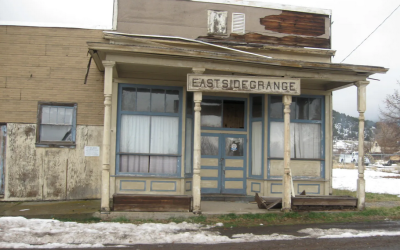EXECUTIVE SUMMARY
Rent control can be broadly defined as governmental regulations that limit landlords’ ability to freely set and increase rents on residential properties. These controls often coincide with a host of other regulations concerning the landlords’ responsibilities and the tenants’ rights in a rental arrangement. While this paper does not aim to be all-inclusive, it intends to do an analysis of the same rent control problem using different approaches to see if we can arrive at the same conclusion. This paper will address both rent ceilings and second-generation rent control unless otherwise specified.
Recent discussions over rent control have emerged again. Because of research done by Professor Hugh Grant at the University of Winnipeg and by the School of Public Policy (SPP) at the University of Calgary, and because of Saskatchewan NDP desires, there is a growing need to study rent control.
Analyzed financially, without considerations for insurance, legal, and maintenance fees, the leasing of a three-bedroom apartment in 2011 will almost break even for the average landlord, and leasing of a secondary suite in a bungalow will make him lose about $650 per month at the same time. With rent control in place, rent increase is limited, while sale for capital gains could reduce the housing supply.
Analyzed theoretically, since rent control artificially suppresses the value of all real estate, owners are less able to borrow against the asset to conduct needed capital improvements. Decisions are often delayed to make renovations or improvements. Costs regarding information search, housing damage due to lack of maintenance, legal fees, and government program management will be incurred under rent control, and there will also be the hoarding effect and the empty nest effect. As profits are lower for suppliers, both corporate and sales taxes revenue will become lower for government. As the price signal is distorted, double-tier or multiple-tier pricing may appear, and a black market may emerge. When government controls the rent of housing, it interferes with the right to revenue, and also changes a private good into a semi-public good, making the housing market reflect some features of the public sector.
Analyzed empirically, economists have demonstrated that rent control leads to housing deterioration, fewer repairs and less general maintenance. Public housing projects are questioned due to its bad income distribution effect, poor social management, and waste of public resources. OECD data demonstrate that the European countries with the highest numbers of price-rent ratios are those with rent control. So far, no evidence has shown that rent control achieves a fairer income distribution. Net benefits are poorly, and in some cases perversely, targeted. Rents in Canadian cities (as shown in the table in Appendix I, page 21) where they were controlled can even be much higher than those in cities without rent control, proving the point that “rent control does not do what most people think it does” (see Endnote 9). Short-term tenants are harmed by rent control while long-term tenants benefit. Another adverse effect of rent control is curtailing the mobility of the labour force because tenants may choose to remain in a city where they occupy rentcontrolled apartments rather than accept a higher-paying job in another city.
Two conditions are said to be necessary for implementation of rent control: a high renter-to-owner ratio and a low vacancy rate. As the proportion of owned dwellings climbed 25 per cent from 1996 to 2006,it can be estimated that more than 70 per cent of residents in Regina have become owners in 2011, which shows a low renter to owner ratio. Muller`s data support the idea that rent control has reduced vacancy rates, which is the reverse of the aim. If the transaction costs are not zero and if there are costs incurred for government regulations and for transfer of production factors, then the more the market is in incomplete competition, the more severe the government regulations and the higher the cost of transferring production factors, the more the rental rate will deviate from the equilibrium, and the more inefficient the housing allocation.
From analyses in all financial, theoretic, and empirical approaches, one can conclude that rent control is not a good idea, and government cannot manage housing better than the private sector. In order to achieve efficiency, there will need to be well-defined property rights; in order to achieve equity, there will need to be a balance between renters and owners. Interference with property rights leads the market to many realignments and a reallocation of resources that is not economically efficient. Therefore, respect for property rights and an arrangement to minimize disputes in transactions and in transaction costs such as the rent-to-own option and cooperative housing will be good choices, while income redistribution can be achieved by cash subsidies.
View entire study as PDF (25 Pages)


